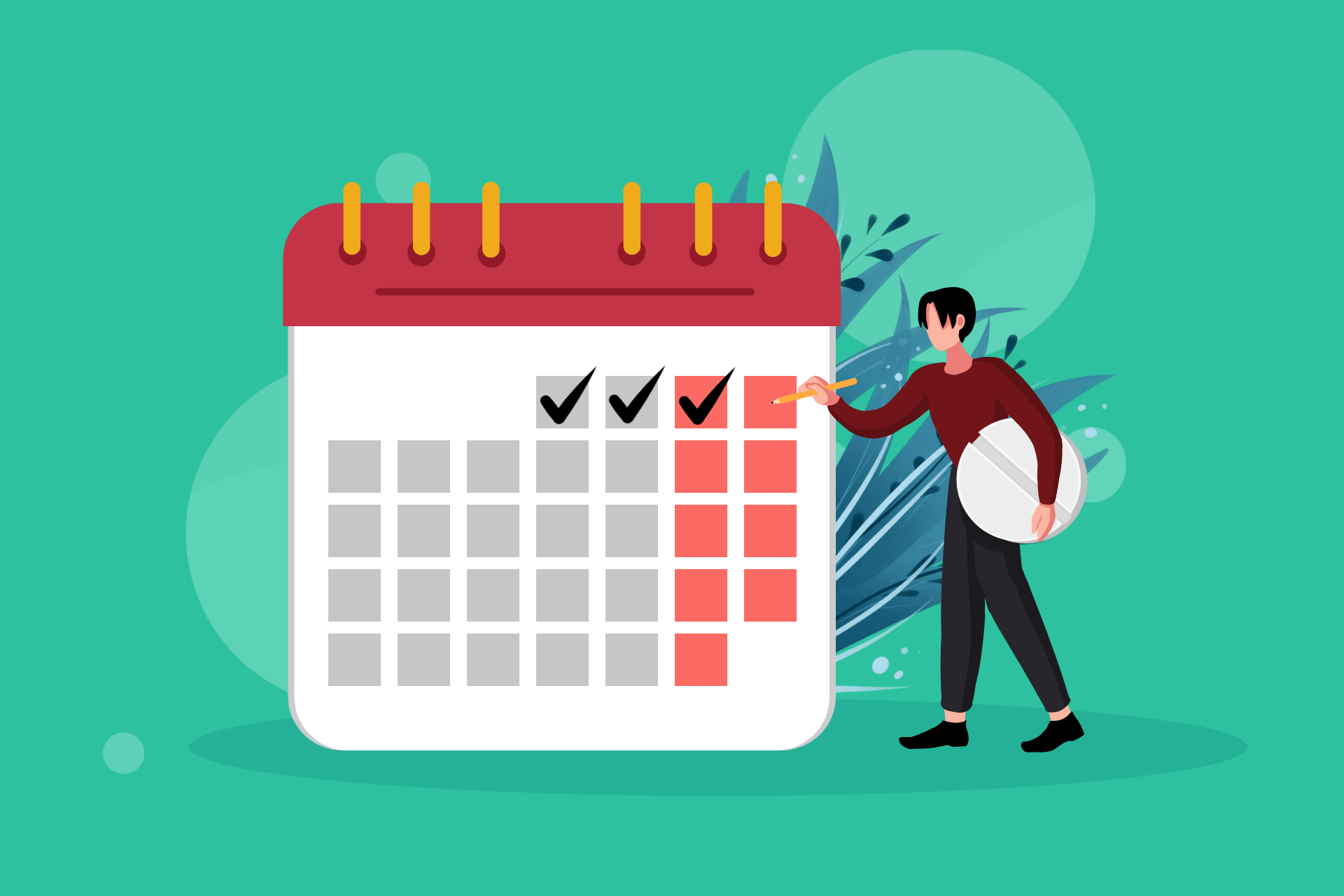Modafinil is a powerful wakefulness-promoting and cognitive-enhancing drug used by many professionals to increase productivity. It has few side effects, low potential to cause addiction, and is generally considered safe. Because of its high level of safety and effectiveness, many people consider taking it every day so they can stay at the top of their game.
This makes newbies wonder if it is safe for frequent use. In this guide, we’ll shed light on everything you need to know about modafinil, from its basic features and long-term safety to the right way to use it to minimize risks.
Modafinil Features
Modafinil belongs to a class of drugs called wakefulness-promoting medications. It was developed by a French professor of experimental medicine to treat narcolepsy in the 1970s. After years of clinical trials and confirmation of safety and effectiveness, the US Food and Drug Administration (FDA) approved it for narcolepsy treatment in 1998. Later in 2003, it extended the approval to cover the treatment of two other sleep disorders: shift work sleep disorder (SWSD) and obstructive sleep apnea (OSA) [1].
Modafinil has proved safe and effective over the years, with most doctors prescribing it as a first-line treatment for sleep disorders in the US. However, today, most people use it off-label for its cognitive-enhancing properties to increase alertness, boost memory, and ultimately increase productivity. It is available under different brand names in 100 mg and 200 mg dose strengths. Its effects typically set in within 30-60 minutes after administration and can last for up to 15 hours. However, its duration of action may vary from person to person based on factors such as sex, weight, age, etc. [2][3]
Modafinil’s mechanism of action is yet to be fully understood, but researchers believe it works by regulating the levels of dopamine and certain other neurotransmitters in the brain that regulate the sleep-wake cycle.
Long-Term Safety of Modafinil
Modafinil is generally considered safe and well-tolerated when used short-term, but what happens if you use it for a month or longer? Well, there are certain things that are not known, as its long-term effects have not been extensively studied. Much of the available data has been focused on its short-term effects, typically ranging between a few weeks to a few months.
Based on anecdotal evidence, modafinil is safe even when used long-term — correctly. The common side effects, which include headache, insomnia, and anxiety, may occur in some users, but they’re typically mild and short-lived and tend to go without treatment. However, it is important to note that people’s responses to drugs differ, and side effects can be more severe in certain individuals than in others.
One of the major concerns surrounding the long-term use of the drug is the possibility of developing psychological and physical dependence. Modafinil is classified as a controlled medication in the USA, but it has an incredibly low potential to cause addiction. In fact, it is for that fact that researchers at Oxford and Harvard Universities deemed it the world’s first safe “smart drug.” Based on anecdotal evidence, modafinil addiction is rare and is mostly linked to overdose or other forms of misuse [4][5].
Notwithstanding, as with all drugs that interact with the central nervous system (CNS), there remains a possibility of developing dependence. Consequently, it is important to use the drug exactly as prescribed by a doctor or healthcare provider.
Another critical aspect that surrounds modafinil long-term use is its impact on cognitive function. While it is known to increase alertness, enhance memory, and boost focus in the short term, it is unclear whether the effects remain the same when the use of the drug is prolonged. More research is needed to confirm the long-term effects and safety of modafinil. However, as with every other medication, it is important to weigh the potential benefits against the risks before considering using it long-term.
Who Are Daily Prescription Users?
The daily prescription users of modafinil are those who use it on a daily basis to treat a chronic medical condition. This includes people who have narcolepsy, shift work sleep disorder, or obstructive sleep apnea. People who use it for this purpose typically have a valid prescription from a doctor and follow a strict dosage.
Other daily prescription users include people who have attention deficit disorder or attention-deficit/hyperactivity disorder (ADD/ADHD) or chronic conditions whose symptoms include severe fatigue. People with these conditions require ongoing treatment to maintain a regular sleep-wake cycle, improve wakefulness during the day, and manage their other symptoms.
When used exactly as prescribed, modafinil can be quite effective for daily prescription users. It works by altering the levels of dopamine, serotonin, and certain other neurotransmitters in the brain that regulate the sleep-wake cycle and mood. It is important for people who take the drug on a daily basis to be mindful of dependence or addiction. As mentioned earlier, while modafinil has a lower potential for abuse compared to other stimulants or stimulant-like medications, it remains important to strictly adhere to the recommended dosage and refrain from exceeding the recommended daily use.
Maintaining open communication with a doctor or healthcare provider can help reduce or prevent the serious risks associated with regular or long-term nootropic use.
Side Effects of Daily Nootropic Use and How to Avoid Them
Modafinil is generally safe, but like all drugs, it has the potential to cause side effects. The side effects may be mild or severe, but in most cases, they’re typically mild and transient. The most common ones include:
- Headache: One of the best ways to minimize the likelihood of experiencing a headache while on modafinil is to stay well-hydrated and get adequate sleep;
- Nervousness: The best way to avoid this side effect is to begin with a lower modafinil dose and assess how your body responds to it. You may gradually increase the dose until you find a perfect balance where it provides the intended benefits without this adverse effect;
- Nausea: Popping the pill with food or dividing your daily dose into smaller, spaced-out doses can help prevent nausea or other gastrointestinal issues associated with modafinil use;
- Anxiety: To prevent this adverse effect, it may be helpful to start with the lowest effective dose and gradually increase it if necessary. Also, taking the drug at the same time every day might help.
More severe side effects, such as ringing in one or both ears, palpitations, high blood pressure, and insomnia, may also result from modafinil use. However, they rarely occur and have been linked to overdose or other forms of misuse [6]. It is worth noting that these sorts of adverse effects can become life-threatening if left untreated. It is advisable to seek urgent medical attention if they arise.
Remember that each person’s response to “smart drugs” can vary. Consequently, it is important to listen to your body and report any persistent or concerning negative after-effects. Always consult your doctor before starting treatment with modafinil or any medication.
So, Should You Take Modafinil Every Day?
It depends! If you have a chronic sleep disorder with symptoms that affect your day-to-day activities, it may be helpful to take the drug frequently. However, if you’re an individual looking to take advantage of its cognitive-enhancing benefits to increase productivity, then you probably shouldn’t take it every day.
However, regardless of your reasons, if at any point you feel you should take a pop of a modafinil pill every day, it is advisable to consult a doctor or healthcare provider to help evaluate your specific circumstances and medical needs.
References
- Modafinil. Retrieved: June 21, 2023. Wikipedia.org.
- Provigil (modafinil) dosing, indications, interactions, adverse effects, and more. Retrieved: June 21, 2023. Reference.medscape.com.
- How Long Does Modafinil Stay In Your System? Retrieved: June 21, 2023. Banyantreatmentcenter.com.
- Provigil: Side effects, dosage, uses, and more. Written by MNT Medical Network. Medically reviewed by Lindsay Slowiczek, PharmD. Retrieved: June 21, 2023. Medicalnewstoday.com.
- Narcolepsy medication modafinil is world’s first safe ‘smart drug.’ By Helen Thompson. Retrieved: June 21, 2023. Theguardian.com.
- Modafinil (Oral Route) Side Effects. By Merative, Micromedex®. Retrieved: June 21, 2023. Mayoclinic.org.








